Tehran, the vibrant capital city of Iran, is not only a bustling metropolis but also a treasure trove of historical sites that offer a glimpse into the rich cultural heritage of the region. From ancient palaces to grand mosques and fascinating museums, Tehran boasts a diverse array of historical landmarks that attract tourists and history enthusiasts from around the world. In this article from Eligasht, we will take you on a journey through some of the most notable historical sites in Tehran, exploring their significance and the stories they tell.
Book Iran Air flights from London to Tehran and Tehran to London with Eligasht UK:
Golestan Palace
One of the must-visit historical sites in Tehran is the Golestan Palace. This UNESCO World Heritage site is a masterpiece of Persian architecture and design, dating back to the 16th century. This magnificent palace, originally built during the Safavid era and later expanded under the Qajar dynasty, boasts a remarkable legacy spanning over four centuries. Comprising various sections, some of the notable features include the elegant Shams Ol-Emareh Palace, the dazzling Mirror Hall, the majestic Ivan and Marble Throne, the opulent Abyaz Palace, and the charming Windcatcher Mansion. The palace’s courtyard, adorned with towering cedar trees, creates an enchanting atmosphere that beckons visitors to wander and immerse themselves in its beauty.
Throughout its illustrious history, Golestan Palace has played host to significant events, including the coronation of Ahmad Shah Qajar, the inauguration of the First Majlis (Parliament), the coronation and reign of Reza Shah, and the coronation of Mohammad Reza Shah Pahlavi. Each event has left an indelible mark, further adding to the palace’s historical significance. The palace complex served as the residence of the Qajar dynasty, and it showcases a combination of Persian, European, and Russian architectural styles. Visitors can explore the stunning halls, lavish gardens, and intricate tilework that adorn the palace, offering a glimpse into the opulent lifestyle of Persian royalty.
National Museum of Iran
For history enthusiasts, a visit to the National Museum of Iran is a must. This renowned museum houses an extensive collection of artifacts that span thousands of years, from prehistoric times to the Islamic era. Visitors can admire ancient pottery, sculptures, jewelry, and other archaeological treasures, which provide insights into the rich history and cultural heritage of Iran. The museum also boasts an impressive collection of Persian manuscripts and Islamic art.
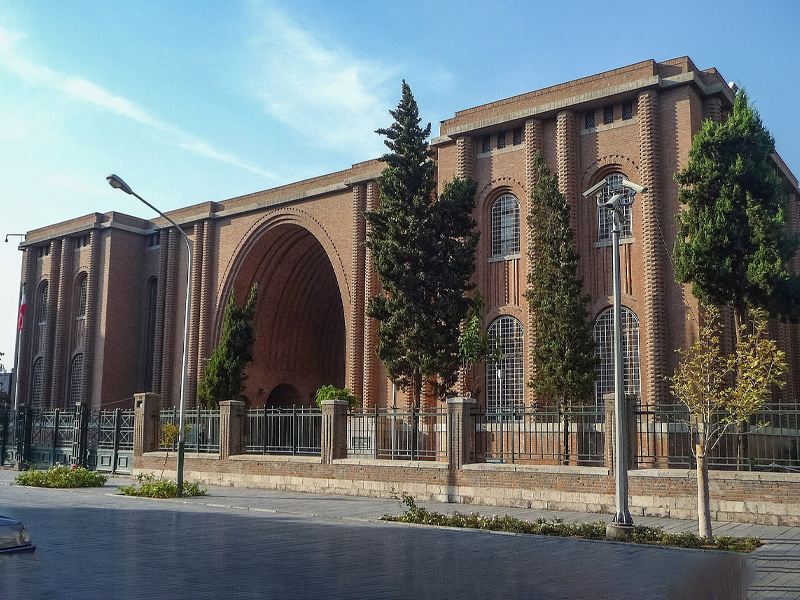
Niavaran Palace Complex
Niavaran Palace Complex is another historical gem in Tehran that offers a fascinating glimpse into the lives of Iran’s royal families. It has its roots dating back to the era of Fath-Ali Shah Qajar. The initial structure on this site was a modest building commissioned by Fath-Ali Shah. Subsequently, during the reign of Agha Mohammad Khan Qajar, another small extension was added. However, it was under the rule of Naser al-Din Shah Qajar that the complex underwent significant expansion, culminating in the grand construction of Sahebqaraniyeh Palace.
Following the directives of Mohammad Reza Shah Pahlavi, the smaller structures were demolished, making way for the construction of Niavaran Palace, which served as the royal residence for the Shah and his family. Before the 1979 Revolution, the palace complex housed the Shah and his family, with Sahebqaraniyeh Palace functioning as an administrative office.
Spanning an impressive area of 9,000 square meters, Niavaran Palace showcases a modern interpretation of Iranian architecture. Visitors can explore the opulent interiors, adorned with exquisite Persian carpets, delicate glasswork, and magnificent paintings. The complex also houses a museum that showcases the personal belongings of the royal family, including furniture, artworks, and clothing.
Sa’dabad Complex
Nestled within the picturesque and verdant neighborhood of Zafaraniyeh in Tehran, Saadabad Palace stands as one of the captivating historical sites in Tehran. This magnificent palace complex has witnessed the passage of four significant historical periods: Qajar, Pahlavi I, Pahlavi II, and the modern era. Initially constructed during the Qajar era, Saadabad Palace served as a cherished summer retreat for the Shahs of that time, drawing them to its idyllic climate and lush surroundings. Today, these palaces have gained prominence as venues for official gatherings and ceremonial occasions. Among them, the Green Palace, once the residence of Reza Shah, stands out as a mesmerizing architectural masterpiece. Each palace within the complex has its unique architectural style and exhibits a diverse range of artifacts, providing visitors with a comprehensive view of Iran’s history and culture. The beautifully landscaped gardens surrounding the palaces offer a serene escape from the bustling city.
Beyond its captivating palatial structures, Saadabad Palace houses a treasure trove of museums, offering visitors a captivating glimpse into Iran’s rich cultural heritage. From the National Museum (White Palace) to the Museum of Fine Arts, the Royal Tableware Museum to the Master Farshchian Museum, each museum within the complex showcases unique collections that range from historical documents and royal albums to exquisite artworks and royal garments. The Saadabad Palace complex is truly a haven for history enthusiasts and art aficionados alike, inviting them to immerse themselves in the grandeur and elegance of a bygone era.
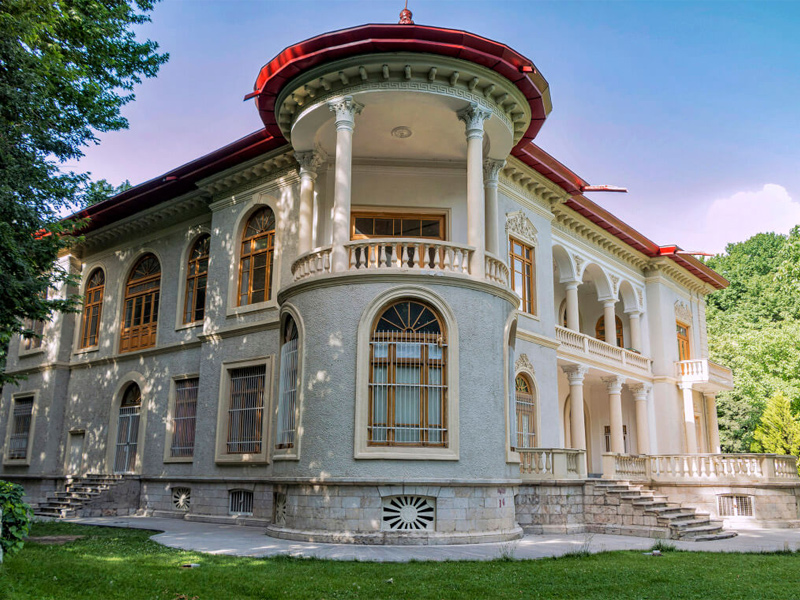
Azadi Tower
A symbol of Tehran’s modern history, the Azadi Tower is an iconic landmark that stands as a testament to Iran’s cultural identity and struggles for independence. Built-in 1971, this towering structure boasts a fusion of modern and traditional architecture. The Azadi Tower’s design incorporates elements of Persian and Islamic art, creating a visually striking monument. Visitors can climb to the top of the tower to enjoy panoramic views of Tehran and learn about Iran’s history through the exhibits housed within.
Ferdows Garden Mansion
One of the remaining architectural treasures from the Qajar era in northern Tehran is the Ferdows Garden Mansion. Today, this complex is known as the Cinema Museum Garden and Ma’yeri Garden, and it was established during the reign of Mohammad Shah Qajar. The current complex is a small part that has survived the beautiful and vast Ferdows garden. This beautiful garden is located near Tajrish Square and is a popular destination among cinema enthusiasts and lovers.
The cinema halls, cultural booths, and famous cafes within this historical and picturesque space have transformed Ferdows Garden into one of the most beloved historical landmarks in Tehran.
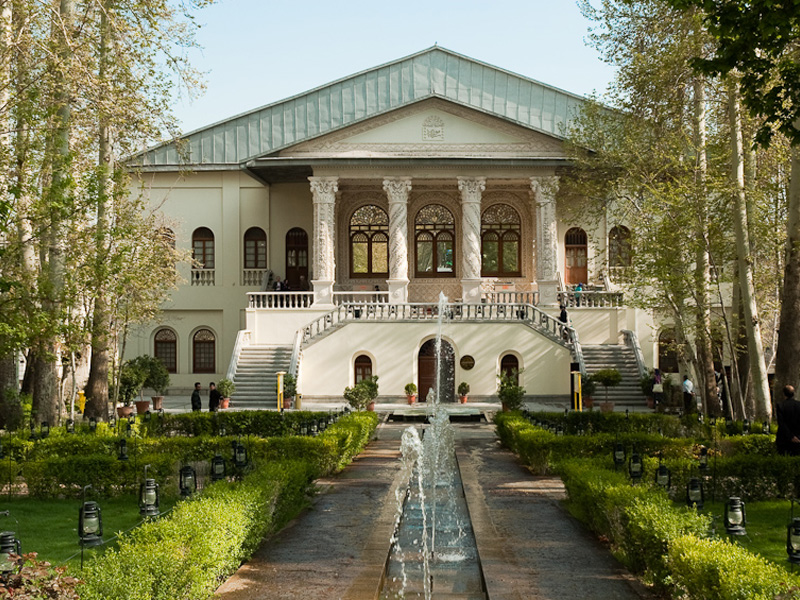
Moghadam House | Historical sites inTehran
Moghadam House Museum is one of the most important historical houses in Tehran, also known as Ehtesab Al-Molk House. Originally, it was a grand mansion that belonged to the renowned Qajar courtier, Mohammad Taqi Khan Ehtesab Al-Molk, who was also the mayor of Tehran at the time. After Ehtesab Al-Molk’s passing, the house was passed down to his son, Dr. Mohsen Moghadam, a professor of archaeology at the University of Tehran.
Dr. Moghadam, along with his wife, transformed this beautiful house into the Museum of Iranian Documents and Handicrafts and donated it to the University of Tehran in 1972. The museum houses a precious collection of Iranian ceramics, enamelwork, tilework, textiles, and coins. Moghadam House was registered as a national heritage site in 2000.
Moghadam House stands as a testament to the rich cultural heritage of Iran, offering visitors a glimpse into the artistic and historical treasures of the country.
Negarestan Museum Garden
One of the most beautiful and largest historical sites in Tehran is Negarestan Museum Garden. The Negarestan Complex is one of the iconic symbols of old Tehran and was established in the 1165s in the Iranian calendar. This garden was built by the order of Fath-Ali Shah Qajar in an area of over 43,000 square meters, of which approximately 11,000 square meters remain today. The complex included halls, mansions, and important structures such as Salam Hall, Qalamdan Hall, Delgosha Palace, and several ponds. The most significant remaining structure from the Qajar era in this complex is the pond, which has now been transformed into the National Arts Museum. The Faculty Buildings of the Negarestan Garden are also considered the most important structures in the garden.
After restoration and reconstruction in 2013, Negarestan Museum Garden came under the management of the University of Tehran and was registered as the National Museum of the History of Science in Iran. This beautiful complex has witnessed many significant historical events, including the imprisonment and assassination of Qa’em Maqam Farahani in this garden. Currently, various important museums are located in this complex, welcoming tourists and visitors throughout the day. Negarestan Museum Garden is located in Baharestan Square in Tehran.
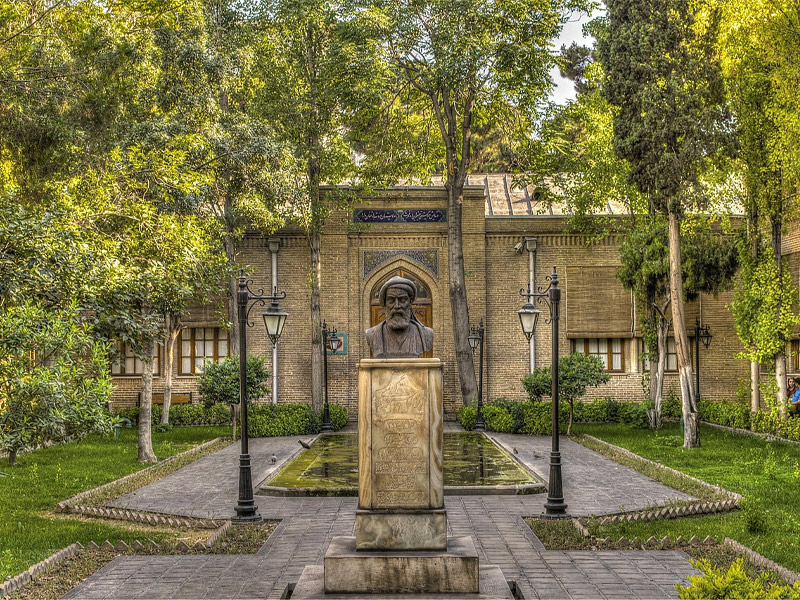
Masoudieh Mansion
Masoudieh Mansion is one of the classical and authentic symbols of Tehran and a gem in the heart of the city. It is a magnificent building with Qajar architecture and a mesmerizing facade, constructed in an approximate area of four thousand square meters. The construction of this complex dates back to the 1250s in the Iranian calendar and was commissioned by Masoud Mirza, the senior son of Naser al-Din Shah. This historical complex houses more than ten buildings and structures and is one of the most famous historical houses in Tehran.
Masoudieh Mansion is the first national library and the first national museum in Iran and is currently one of the top tourist attractions in Tehran. This beautiful historical complex, registered in the National Heritage List of Iran in 1998, is located in the southwest corner of Baharestan Square.
Time Watch Mansion
The beautiful and captivating Time Watch Mansion, or the Time Museum, is a unique palace located in the northern part of Tehran. This complex is built on an area of approximately 5,000 square meters, with around 700 square meters dedicated to its stunning building, which is one of the most beautiful historical sites in Tehran. In this complex, you can learn fascinating information about the history of clocks and clockmaking in Iran and see extraordinary clocks. Additionally, the beautiful and mesmerizing architecture of the two-story building in this complex will enchant every viewer.
The Time Watch Mansion, or Clock Museum, has a history of about a hundred years and is located in one of the most pleasant and oldest areas of Tehran. This historical mansion is situated on Zafaranieh Street, at the corner of Parzin Street.
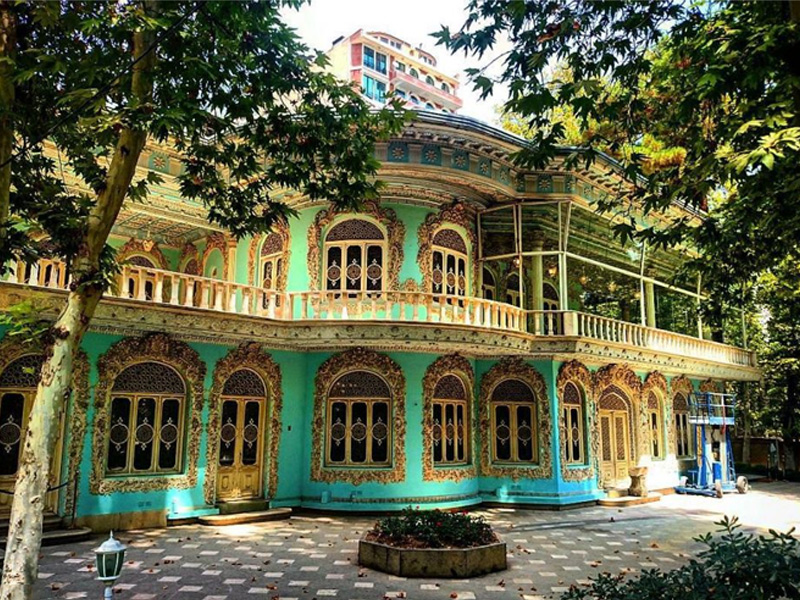
Final words
historical sites in Tehran provide a captivating journey through Iran’s rich past, offering visitors a deeper understanding of the country’s cultural heritage. From majestic palaces and grand museums to iconic landmarks, these historical sites in Tehran represent the diverse influences and architectural styles that have shaped Iran’s capital. Exploring these sites not only allows us to appreciate their beauty and significance but also provides a glimpse into the lives of the people who once inhabited these remarkable places. So, if you find yourself in Tehran, make sure to immerse yourself in its historical treasures and experience the allure of Iran’s capital firsthand.
FAQ
1- What are some of the notable historical sites in Tehran?
Tehran is home to several notable historical sites. Some of the must-visit places include the Golestan Palace, a UNESCO World Heritage Site known for its stunning architecture and beautiful gardens; the National Museum of Iran, which houses a vast collection of artifacts from various periods of Persian history; and the Tehran Grand Bazaar, a bustling marketplace with centuries-old history and vibrant atmosphere.
2- How can I visit the historical sites in Tehran?
Most of the historical sites in Tehran are open to the public and accessible through various means of transportation. You can use taxis, public buses, or the Tehran Metro to reach these sites. It is advisable to check the opening hours and any entry requirements beforehand to make the most of your visit.
3- Are there guided tours available for the historical sites in Tehran?
Yes, guided tours are available for many historical sites in Tehran. These tours can provide you with in-depth knowledge about the sites, their history, and cultural significance. You can either join group tours organized by travel agencies or hire a private guide to tailor the experience to your preferences.
4- Are there any entrance fees for visiting historical sites in Tehran?
Yes, some historical sites in Tehran may have entrance fees. The fees vary depending on the site and your status (e.g., whether you are a local or foreign visitor, student, or senior citizen). It is advisable to check the official websites or inquire locally to obtain accurate information about the current entrance fees.

